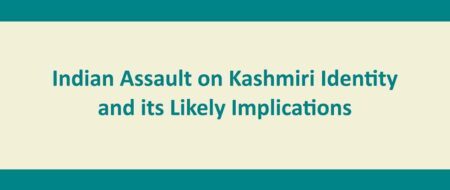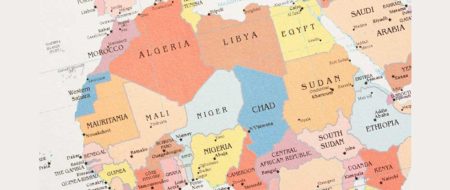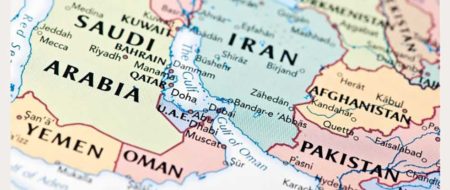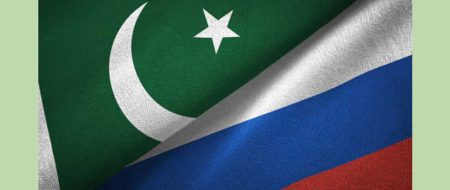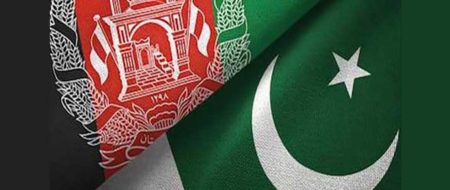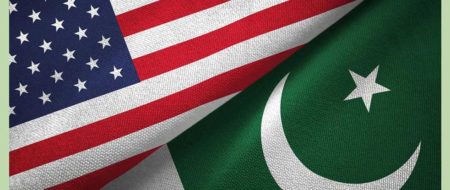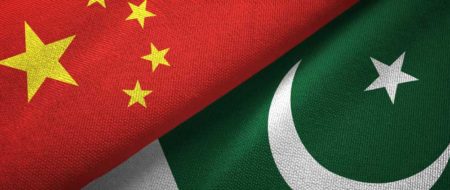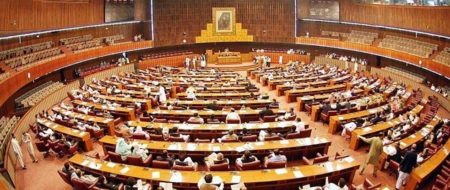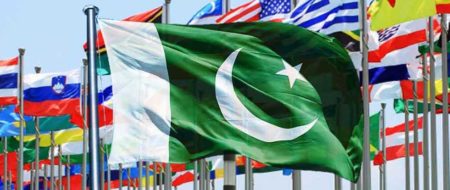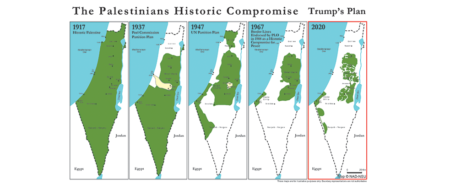Pak-US Relations: Repetition of the Past or Departure?
The Pak-US relations are an important subject, which everybody discusses. It is so, because the shadow of the United States has eclipsed the world. And we are all, in different ways, haunted by what this larger than life and self-proclaimed leader of the world, is likely to do in various parts of the world.
At times, reflecting on this subject and recalling that Pakistan and China call their friendship as all-weather friendship, correspondingly, the US-Pak relationship can be conveniently termed as a fair-weather friendship. The US-Pakistan relationship is old and enduring, but subject to vicissitudes of international politics. In this relationship there have been many ups and downs. The best way to describe the US-Pakistan relations, over the last five or six decades, is that it is like the stock market. It goes up and it goes down. Sometimes there is a crash and sometimes there is a rally rising to a peak. This can be looked at as a stock market relationship, where things have no permanent value, and are constantly evaluated differently.
A distinguished foreign Ambassador, currently posted in Islamabad, provided a broad evaluation of the US-Pakistan relationship at a seminar some three months ago, more or less, in these words: “the US-Pakistan current relationship is single dimensional, restricted to fight against terrorism, while US-India relationship is strategic, multi-dimensional and enduring. I am quoting this because President George Bush, the current President of the United States, is scheduled to visit both the countries in a few days. The US appears determined to build a strategic partnership — a multi-dimensional, long term and an enduring relationship — with India. As far Pakistan is concerned, it has a single dimension relationship, born out of the necessity of combating terrorism and no one exactly knows what its future is.”
A cursory glance at the chronological history of the US-Pakistan relations stands out as a necessity for a better comprehension of the issue.
Phase One: 1947-79
The first phase, evolved during 1947-79 with two high watermarks of 1965 and 1971. Today, we say that the United States is the sole superpower. It is fashionable to say so, but this was true in 1945 as well, when the World War-II ended. In fact, it was a clearer reality in 1945 than it is today. United States was the only power, which had not seen war on its own territory. It had more than 50% of the world’s production or GDP. Europe was in ruins, Soviet Union was nursing the wounds of war, China was going through a civil war. Japan had been defeated and occupied. South Asia and South East both were still under the colonial rule and so was Africa.
When, in 1947, Pakistan came into being, the United States was the only power with surplus wealth, surplus energy and the capacity to support others. It was supporting the reconstruction of Europe. The first generation of Pakistani leadership looked at the world in this backdrop. Pakistan had Common Wealth links, and it naturally moved from Britain towards a relationship with the United States. Pakistan’s orientation as an Islamic state supposedly caused a bit of mental reservation against the prevalence of the Godless Communism in the Soviet Union. Through the traditional historic links, Pakistan was attracted to the West. Sometimes some people blame the first Prime Minister of Pakistan that he did not go to Soviet Russia and that instead he went to America. But owing to those circumstances, that was a natural process through which Pakistan drifted into a relationship with the United States but with different objectives.
During 1947-49, the Soviet Union had recovered somewhat from the effects of war and by 1949 it had also become a nuclear power. The West noticed that there was destabilization in Turkey and Greece, the Truman Doctrine of Containment, based on the ideas of George Cannon, was proclaimed. This was an attempt to stop the expansion of the Soviet Union’s influence into Greece and Turkey and also into the Middle East. Afghanistan was already a buffer state. Pakistan, Iran, Turkey, and Iraq were involved into Baghdad Pact, which later became CENTO, after the revolution in Iraq. Pakistan was also roped into another arrangement called SEATO. The American objective was to contain Communism. That was not Pakistan’s objective. Its objective was to gain external support for having a military equalizer against the constant threat posed by India. It was purely a defensive move against India. For America, it was for defense against the Soviet Union as well as communism.
Although Pakistan became ally, Pakistan’s objectives varied. There was no convergence of interests. Therefore, when the test came in 1965, it was exposed that Pakistan’s expectations were unrealistic. Pakistan and America had got together without understanding each other’s real motives.
This relationship was further exposed in 1971 through the tragic consequences. Pakistan moved away from Pacts, .joined the Non-Aligned Movement, and after India’s nuclear test of 1974 Pakistan started its own program to develop the nuclear technology. From being the most allied ally Pakistan became the most sanctioned nation.
Phase Two: 1979-1989 ─ 2001
Dramatic changes took place in the world in 1979. The most important being the revolution in Iran in February 1979 and the soviet intervention in Afghanistan. Meanwhile, the change of policy in China also started taking place at the end of 1978, when China started a program of modernization, economic reforms, and opening to the outside world. The Western interests in the Middle East region and our part of the world received serious setback, both because of the Iranian revolution, and more so, because of the Soviet intervention. Till then because of Afghanistan being a buffer state, Pakistan remained relatively an unimportant country in the Western alliances. The focus of East-West confrontation was in Europe and in Korea. Far-East and Europe were the areas of priority. South Asia was only marginally important and not an area of priority, especially because of Afghanistan. When the buffer state was occupied by the Soviet Union the battlefront shifted here.
From 1979 to 1989, for a decade, Pakistan was once again a preferred state. It had come under pressure in the 1970s and was subjected to sanctions. Pakistan’s status as a most allied ally, although not of much benefit, was lost. Pakistan drifted towards Non-Alignment. It was not just ignored or neglected. It was rather subjected to Symington Amendment, Glenn Amendment, and Solarz Amendment. In 1979-80, when Pakistan was involved as a front line state in the war in Afghanistan, it became the favorite once again. With the withdrawal of the Soviet forces and the collapse of the Soviet Union that phase ended. Pakistan was left alone to face the Kalashnikov and drug culture, Pressler Amendment, initially, came as a saving grace, later it was also used against us.
Pakistan was, abandoned, according to many of us, but my interpretation is, that the primary area of concern and interest for the Western alliance was Europe. With the collapse of the Soviet Union, Europe offered more attractive opportunity than this region. Therefore America’s focus shifted back to Europe, to consolidate the gains in Eastern Europe and in the Western part of the former Soviet Union, especially, in the states becoming independent from USSR like Baltic States; Ukraine, Belarus, Moldova, Georgia etc. They had spread their influence to Eastern Europe and beyond. This was the period of Eastward expansion of NATO. Pakistan was neglected, because it was once again less important. It was left to its own situation, to look after the Afghan refugees and to face the consequences of Afghan civil war.
In the meantime, in an attempt to nervous the Iranian revolution, Iran was attacked through Iraq, built up by Western support, leading to eight years of conflict. Later, Iraq turned in a different direction and attacked Kuwait, leading to the first war of 1991 and return of the United States. Then the second war of 2003 and occupation of Iraq took place.
There is a very interesting parallel. Americans, when they come to an area as interventionists, they leave. They came to Europe for the 1st World War and left. They came to join the 2nd World War but, did not leave. They came to Iraq in the first Iraq war of 1991 and left. After the 2nd Iraq War they are staying. They came to Afghanistan during Afghan war against USSR, they left. After the 2nd War against Taliban, they are trying to consolidate themselves. America’s second coming is more serious, with a lesser chance of return and isolationism etc. In that sense, their second coming to Afghanistan seems to be on a long-term basis. Presence, on a long-term basis, in Afghanistan, cannot be sustained without a long term relationship with Pakistan.
The “departure” is likely to be that the Americans, this time are not likely to leave easily as they did on the previous occasion. Therefore, what they are saying is that they are trying to build, a strategic relationship with Pakistan. The words used are the same as with India. In fact, it is a single dimensional as well as single directional relationship. They are trying to build a relationship with Pakistan, which may be more lasting than the previous relationship. However, their terms are very strict and very harsh. The ‘departure’ is that they have not come to leave quickly. They have come with the intention of consolidating their position in this region.
Changing regional and global scene and the US: Understanding the role and significance of the other two countries — China and India — is equally important. The global situation changed, when Russian Empire collapsed and the Soviet Union was replaced with 15 countries. That time the Western objectives were, first, to bring the Russian Federation into a longer term relationship with NATO and second, to expand NATO eastwards as far as possible, up to the border of China. Instead of considering weakened Russia as the counter point in global politics, the USA considers China as a future focal or counter-point of international politics. It was announced that China was the potential future adversary of the USA. Some people talked of rising China, making rapid economic progress, being a challenge to the world, a threat to the world.
Strident America believed that the next century was going to be “American Century”. The doctrine of American century was proclaimed and USA made penetration into Central Asia and tried to build a new strategic relationship with India. Although India was, perhaps, one of the very few countries, which during the war in Afghanistan to get the Russians out, remained on the Soviet side and did not join the international coalition.
Politically India changed its orientation towards the United States, which had a longing desire over the years, to win over India. The US had accepted Pakistan, reluctantly, as a consolation prize, but they had always wanted to make India as their favorite country. They found the opportunity and they turned this relationship into a meaningful one. President Clinton’s visit in 2000 was very significant, in which the concept of US-India long-term strategic partnership was fairly well-elaborated. Pakistan, of course, was also “rewarded” with a token five-hour admonition session.
The policy under Clinton was “containment” of China and “cons-tructive engagement” to bring China into the global partnership. But when President Bush came to power, he concerned by the fast growing economy of China, also started talking of military threat from it.
Chinese global view was that from the collapse of the Soviet Union, the world had inherited one Super Power, and several great powers. Gradually, there was a transition from a Bi-polar to a Multi-polar system and that all nations should encourage that trend. China’s policy based on the five principles of peaceful coexistence committed to peace and development was oriented towards the encouragement of the evolution of a Multi-polar international order rather than a uni-polar world order, dominant by one country or a group of countries. The Chinese have also developed the theory of Peaceful Rise. China believes that peace and development are the main objectives. Countries can make progress by resolving their disputes with neighbors as they did over the last two decades from 1988 onwards and that the countries can rise through economic power by sharing their prosperity with the neighbors and with the world.
China can become a great power, but not by military force or strategic use or projection of that power. In any case, China’s military power, relatively speaking, is much weaker than that of the United States, because China’s defense budget is only 6% of the US defense budget. It is about 60% or lesser than 60% of Japanese defense budget. Japan has also been built up by United States as a major military power. Restrictions imposed after the 2nd World War on Japan’s defense budget limit of one percent, as well as of not sending their troops beyond one thousand miles have been relaxed.
The USA had established initial contact with China in 1971 through Pakistan. They had signed three Joint Communiqués with China in 1972, 1979 and 1987. One of the commitments, in all communiqués is that Taiwan is an inalienable part of China and USA believes in one China theory. But USA has been supplying arms to Taiwan, in violation of those agreements including very sophisticated weapons, building up Taiwan, encouraging the tendency to become independent, and asking Japan to support the independence of Taiwan. The USA is following the policy of encirclement of China. When President Bush came to power he first declared China to be main adversary. Then the aircraft incident, which crashed in China, demonstrated that while China did not want a conflict, China was no push over. China would resist and USA will have to treat China with respect.
In this situation, India has been chosen as a future strategic ally. If Pakistan was used against the former Soviet Union, India, as a strong military power, could be used to check the growth of China. In 2001, the new plans of missile defense NMD and TMD were projected and India became the first partner to accept the missile defense. If nothing else, it is well known that currently the Chinese do not have a very strong capacity to hit back at the main centers of the United States. But to the best of my knowledge and belief, they have at least twenty missiles carrying sensitive warheads, which can reach the United States. So, there is a deterrent. Now the purpose of this National Missile Defense (NMD) program was to neutralize the potential of China to be able to hit back the United States. The second objective of the nuclear missile defense policy was to put much financial burden on China, because China will be forced to increase its defense capability to meet the challenge of NMD. Thus the economic growth would slow down and China would not have this possibility of being the fastest growing country in the world as it did at the rate of average 9% over the last fifteen years. The aim of USA is to slow down the economic growth of China and also to eliminate the possibility of retaliation in case USA did something against China. Thus the departure context involving Japan, South Korea, India and Central Asians States, especially, Uzbekistan into the encirclement of China makes Pakistan-China relations even more strategically important, both for Pakistan and for China.
Phase Three: 9/11 and After
Now, the entire globe faces a new factor. By the year 2000, the remnants of the Jihadist structure that was created in Afghanistan to expel the Soviet Union emerged as a force on its own. It got out of control of those, who, initially, built it and backed it. The Taliban and the Al-Qaeda were such outfits, which had provided the resistance. After the defeat of the USSR they come in conflict, not with the Russian Federation, but with the American imperial ambitions in the region. There were several Incidents in the Gulf, including the 1998 attacks on US Embassies in Africa and then came the final attack of 9/11 on mainland USA.
The 9/11 is the beginning of the last phase — the current phase. It was a terrible event and a shocking experience. The United States main land had been safe for over 200 years. USA had fought many wars but always on other people’s soil and this was the first time that something happened on the US soil. So, it was a terrible shock, a shock that pushed USA to ill-considered spontaneous violent response. Their first target, immediately, became Afghanistan. The proclaimed objective was to destroy the Taliban regime and to destroy Osama bin Laden. The Taliban regime was overthrown, but one does not know what happened to Osama bin Laden or where is he? But he is still a Ghost haunting the policy-makers in the West.
Fighting the former Soviet Union was easy. There was a visible enemy, his strength was known, his missiles numbers and his bombing capability were known, and so one could match them and sort them out. Here is an enemy, which is invisible and therefore, in psychological terms it is the most damaging. It is psychological warfare. They see an enemy round every corner. Their own internal society has been subverted by new laws. Freedom, liberty, rule of law all have become victims of this fear of the invisible enemy. A general war has been proclaimed against terrorism.
Pakistan, faced with a difficult situation, opted to become a party. The decision was taken by those in authority, according to their best judgment to save the country, but it did not meet the popular sentiment. It created an internal dichotomy between the rulers and the ruled. There is a similar situation in several other Muslim countries.
The 21st century-oriented Security Doctrine of the United States further elaborates its agenda. This Doctrine spells out two very dangerous principles: 1) that the United States is the most powerful country and it has the right to use force unilaterally to maintain its supremacy in the world. 2) The US reserves the right to use military power through preemptive strike for preventing the rise of any potential rival or threat. It has the right to station troops in any part of the world. The idea of preemptive strike, takes us back to the middle Ages, because the international legal progress that has been made over the years has been reversed. The right to act unilaterally by ignoring the international institutions, such as the UN, is obviously prone to violate the International Law and endanger peace. A mighty power has been unleashed without moral or legal restraints to reshape the world, and to redraw the maps of the Middle East. Acting on this agenda it marched to control the strategic areas and strategic raw materials. After Afghanistan came the attack on Iraq.
The success in Afghanistan has also not been cent percent. There are still reports of resistance, which is growing in strength. The so-called allied forces have not been able to consolidate their hold in Afghanistan. The collapse of the regime in Iraq was quite fast, but the resistance of the people, who consider them occupying forces and not liberators, is totally unmanageable and out of control. In 2003, we were hearing that after Iraq, which country would be attacked next, whether it would be Iran, Syria, Pakistan, Jordan or Saudi Arabia. All countries are being mentioned as on the list. The Iraqi experience had somewhat of sobering effects on USA.
The excuse in Iraq was that they had weapons of mass destruction (WMD) which did not turn out to be true. The UN Inspectors had already announced that Iraq did not possess such weapons. North Korea drew a very interesting lesson. The Korean lesson was that Iraq was attacked because the American knew that they did not have weapons of mass destruction (WMD). The North Korea announced that they had them and would use them. Logically, if the policy was to attack, because Iraq had weapons of mass destruction, then the attack should have promptly come on North Korea. But when Korea announced that they had the weapon and they would use it, a new strategy was adopted. China was involved through six-party talks to resolve this conflict.
Through their own mistake and mismanagement of Iraq, they helped a group to come into power, which was likely to refuse cooperation in any adventure against Iran. Therefore, whatever action was being contemplated against Iran by Israel or by the United States became more difficult as far as the power structure created in Iraq was concerned and then emphasis was shifted to threatening Syria more.
In case of Iran also, although the nuclear program was being subjected to pressure and threatened attacks, three European countries were involved to tackle this issue. The policy of unilateral preemptive strike went relatively into the background. Then the issue was taken to Vienna and in IAEA, it was decided to refer the matter to the Security Council. Much was made out of the fact that China and Russia also voted for taking the matter to the Security Council. But actually, if one analyzes deeply, China and Russia were conveying the message to USA that you defied the Security Council in case of Iraq arrogantly; and acted unilaterally, see the result! Now, you want to go back to the Security Council, so, we will bring you before the Security Council, but not necessarily to support your cause to impose sanctions on Iran, but to find a peaceful way of solving this problem.
The Russian-Chinese vote to bring the Iran issue to the Security Council was not a vote in favor of the United States, but in the favor of collective action against unilateralism, which is consistent with their policy of multilateralism. Russia also offered to resolve this issue by facilitating the enrichment of uranium on the Russian soil. The final shape of this agreement is not clear yet it seems that the progress is being made towards finding a political solution rather than through imposing sanctions. The issue will be hopefully diffused.
The policy of preemptive strike has met its limits. Not abandoned, but it has a bloody nose. The policy of unilateralism has also found its limitations. The USA is driven back to collective security and back to the Security Council. Pakistan’s policy on this issue is also that Iran as a signatory to the NPT and under Article 4, has the right to peaceful uses of the nuclear energy. Of course, Pakistan is against proliferation. Iran has tried to give its clarification that it is not interested in weapons. If it accepts to enrich uranium in the Russian areas, it will further prove that Iran is really not interested in weapons. We are seeing some positive developments.
This was the regional and international context that brought both the countries which closer. On the 18th of July 2005, an understanding was built between the leaders of India and the United States, that USA will transfer the nuclear technology to India for peaceful uses. They have been negotiating to sign an agreement during the Bush visit. There are reports that there are still some snags. There are strong advocates in India, who do not want to submit their nuclear program to international safeguards. It is still an open question. But the interesting thing is India is not a signatory to the NPT. Still USA is willing to transfer nuclear technology to India which means the United States itself acting in violation of the NPT by transferring this facility to a non-signatory. This will open up an opportunity for others. Pakistan has already asked for equal treatment, which it may or may not get. It would set a bad precedent, if they are serious about non-proliferation. May be there would be others who would come forward*.
The latest phase of US-Pakistan relations highlights that Pakistan was subjected to two types of sanctions: 1) Sanctions, which were imposed in 1998, when Pakistan had nuclear tests and 2) sanctions related to democracy, which were imposed after October 1999. By joining the war against terror and negotiating certain agreements with USA, Pakistan has been given reprieve from both types of sanctions. Changing the laws would have been difficult, Pakistan, therefore, was declared a Non-NATO ally. Allies cannot be denied economic and military help. The President of USA acquired the authority to enter into economic as well as military relationship with Pakistan. The aid package of $ 3.2 billion was sanctioned, half military, half civilian. Later on, the sanctions were also waived off.
The interesting thing is they have still not removed the legal restrictions. The laws are still there. Pakistan is being given one-year exemption from the application of the law. It is interesting to recall that, when Pressler amendment was passed, it was, initially, an enabling legislation. The three laws, Symington, Glenn and Solarz amendments, prevented assistance to Pakistan, because of suspicion on Pakistan’s nuclear program. The Pressler amendment was passed, which authorized the President of USA to certify that Pakistan did not have the nuclear device to his satisfaction. Initially, when Pakistan was involved in the war in Afghanistan, the exemption was to be given for five years. In 1985 the Pressler amendment was passed, under which year to year exemption was to be given. That exemption was not given in 1990, after the Soviet withdrawal from Afghanistan.
Present strategy whether the current year to year exemption will cease at a particular moment or it would be converted to the amendment of the laws and become permanent is hard to predict. The US policy in South Asia is clearly aimed at treating India as a major power in the new league of Great Powers. The US wants to maintain this policy. Probably, it is right, from its point of view, not to treat Pakistan equitably. It is trying to establish two different equations: one US-India equation in which US treats India as a major partner, and one US-Pakistan equation. The real dimension of US-Pakistan equation is that this area is regarded as a center of extremism and terrorism. Pakistan is situated close to Afghanistan, where the US wants to remain and next to Iran, where it wants to see some changes. Therefore, as long as this area remains unstable, the relationship between the United States and Pakistan is not likely to end, as it ended in the past. It is likely to continue to be developed both in the military field and economic field. The education policy of USA vis-à-vis Pakistan is particularly important so is their interest in the development of the social sector through NGOs. There is an attempt to reeducate this nation mentally. For this also they have a major program.
It can be intuitively asserted that Pakistan’s nuclear program has still not found total acceptability. It has been acknowledged reluctantly. But the view is being projected that there are extremists and fundamentalists in this country. The predominant perception is that Pakistan’s nuclear assets are in safe hands today; tomorrow it may not be so. Therefore, it is not safe for the world. Secondly, Pakistan’s religious sentiments and the spirit with which Pakistan demonstrated that it could support Jihad against the Soviet Union, is also considered a factor to be afraid of by policy-makers of the West. The statement by the former Secretary General of NATO, who after the collapse of the Soviet Union had said, “Pakistan has taken care of the red menace, now it has to deal with the “green menace.” Islam or “green menace” is haunting them.
Recently, the new issue of cartoons and sketches has once again highlighted and demonstrated that there is a mental divide between the West and the Muslim world, not only in Pakistan, but throughout the Muslim World. There is also a mental divide between the broad masses and many of the governments in the Muslim World. The policy-makers of the United States are going to have sleepless nights about the future of Pak-US Relations and about the stability of this area. In essence, the epicenter of future political earthquakes lies somewhere at the tri-junction of Afghanistan, Iran and Pakistan also which will have an impact on future course of Pak-US relations.
____________
Questions/Answers
Q: What is Pakistan’s future Foreign Policy?
A: Pakistan is being pushed into becoming a South Asian State. Even Pakistan’s earthquake is called South Asian earthquake because India and its friends have managed to create a situation, where Pakistan should have an inferior status vis-à-vis India. In South Asian context, nobody will be willing to give us equality of treatment with India. Pakistan’s foreign policy vision would be corrected, if Pakistan projects itself partly as South Asian and substantially as a Middle Eastern state and partly as a Central Asian


